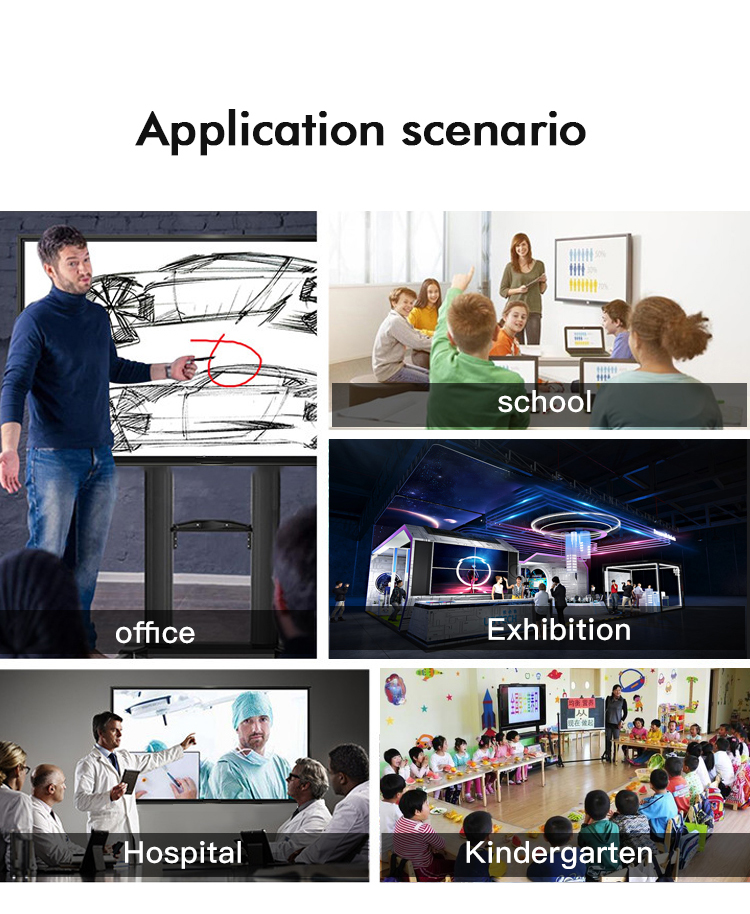Open-frame touchscreen kiosks have become a powerful tool to captivate audiences and revolutionize interactive experiences. This comprehensive guide will delve into the amazing world of open-frame touchscreen kiosks, offering a deep understanding of their distinct features, various types, as well as the advantages and disadvantages they bring.
What is Open Frame Touch Screen Kiosks
Open frame touch screen kiosks are interactive self-service terminals that feature a touch-sensitive display, enabling users to interact with digital content through direct physical contact. These kiosks offer a wide range of functionalities, from information dissemination and entertainment to point-of-sale transactions and self-service applications.
How Open Frame Differs from Closed Frame Kiosks

Exploring the Hardware Structure
Open frame touch screen kiosks are designed without an enclosure, making them extremely versatile and easy to integrate into existing structures or third-party enclosures. Their minimalist design allows for seamless integration, making them suitable for various environments.
Highlighting the Aesthetic Appeal
The absence of an enclosure in open-frame touch screen kiosks gives them a sleek and modern appearance, making them visually appealing and attractive to users. The exposed frame showcases the cutting-edge technology, creating a sense of sophistication that enhances the user experience.
Flexibility in Customization
Unlike closed-frame kiosks, open-frame touch screen kiosks offer a high level of customization. The absence of an enclosure allows for personalized branding and design, ensuring that the kiosk aligns seamlessly with the overall aesthetics of the surrounding environment. This flexibility empowers businesses to create a unique and immersive experience for their users.
Types of Open Frame Touch Screen Kiosks
Capacitive Touch Screens

Multi-Touch and Gestures
Capacitive touch screens enable users to interact with the display using multiple points of contact simultaneously. This multi-touch capability enhances the user experience, allowing for gestures such as pinch-to-zoom, swipe, and rotate, making interactions more natural and intuitive.
Enhanced Touch Accuracy and Responsiveness
Capacitive touch screens offer superior touch accuracy and responsiveness compared to other types of touch screens. This enables users to navigate content effortlessly, without experiencing any lag or delays, providing a seamless and satisfying interactive experience.
Resistive Touch Screens

Single-Touch Functionality
Resistive touch screens are designed to detect the pressure applied by a single point of contact, typically a finger or a stylus. While they lack multi-touch capabilities, they are highly accurate in detecting touch, making them suitable for applications that require precise inputs.
Ideal for Harsh Environments
Resistive touch screens are highly durable and resistant to scratches, making them ideal for harsh environments where regular maintenance might be limited. They can withstand exposure to dirt, dust, and moisture, ensuring reliability and longevity in demanding settings.
Benefits of Open Frame Touch Screen Kiosks

Intuitive and User-Friendly Interface
Open frame touch screen kiosks provide an intuitive and user-friendly interface, enabling users to interact with content effortlessly. The touch-based navigation eliminates the need for complex menus, making interactions more instinctive and engaging.
Immersive and Interactive Experience
The combination of high-definition displays and touch screen capabilities creates an immersive and interactive user experience. Whether they are browsing through product catalogs, exploring interactive maps, or playing games, open frame touch screen kiosks enhance user engagement and create memorable experiences.
Drawbacks of Open Frame Touch Screen Kiosks

Vulnerability to Damage and Wear
Open frame touch screen kiosks are susceptible to damage and wear, especially in high-traffic areas. The exposed display can be vulnerable to scratches, impacts, and accidental spills, requiring regular maintenance and replacement of components to ensure optimal performance.
High Initial Investment Cost
The installation of open frame touch screen kiosks involves a significant initial investment. The cost includes the hardware, software development, installation, and customization. However, it is essential to consider the long-term benefits and return on investment that these kiosks bring in terms of improved user experience, increased customer engagement, and streamlined operations.
Maintenance and Support Considerations
Open frame touch screen kiosks require regular maintenance to keep them in optimal condition. This includes software updates, hardware inspections, and cleaning routines to prevent dust accumulation and ensure functionality. Additionally, businesses should consider the availability of technical support and system upgrades to address any issues or advancements in technology.
Open Frame Digital Kiosk for Various Industries

Retail and Hospitality
Open frame touch screen kiosks have become increasingly popular in the retail and hospitality industries. They allow customers to browse product catalogs, place orders, and make payments, streamlining the purchasing process and improving customer satisfaction.
Healthcare and Education
In healthcare settings, open-frame touchscreen kiosks can serve as self-check-in stations, enabling patients to register their arrival, update personal information, and indicate the purpose of their visit. Educational institutions can utilize open-frame touchscreen kiosks to provide interactive learning experiences, enhancing student engagement.
Transportation and Entertainment
Open frame touch screen kiosks are widely used in transportation hubs, such as airports and train stations, to provide wayfinding information, flight/train schedules, and boarding pass printing services. In the entertainment industry, these kiosks can offer ticket purchasing options, event information, and interactive maps to enhance the overall guest experience.
Successful Deployment of Open Frame Touch Screen Kiosks

Strategic Placement and Accessibility
To maximize the impact of open-frame touchscreen kiosks, strategic placement is crucial. They should be positioned in high-foot-traffic areas where users can easily spot and access them. Consideration should also be given to the height and angle of the display for optimal viewing and interaction.
Designing an Engaging User Interface
Creating an engaging user interface is essential to encourage interaction and attract users to the kiosk. The interface should be intuitive, visually appealing, and aligned with the brand identity. Utilizing high-quality graphics, clear navigation options, and interactive elements will enhance the overall user experience.
Considering Security and Privacy
Open frame touch screen kiosks may handle sensitive user information, such as personal details or payment data. Therefore, businesses must prioritize security measures to protect user privacy and prevent data breaches. This includes implementing encryption protocols, secure payment gateways, and user authentication mechanisms.
Future Trends and Innovations in Open Frame Touch Screen Kiosks
Integration with Artificial Intelligence
The integration of open frame touch screen kiosks with artificial intelligence (AI) technologies is an emerging trend. AI-powered kiosks can offer personalized recommendations, intelligent voice interactions, and real-time data analysis, providing a highly tailored and contextualized user experience.
Adoption of Augmented Reality
Augmented reality (AR) is another exciting trend in open frame touch screen kiosks. By incorporating AR technology, these kiosks can overlay digital information onto the real world, allowing users to experience virtual objects, try on virtual clothing, or visualize products in their own environment, transforming the way users interact and engage with the kiosk content.
Expansion of Internet of Things (IoT) Capabilities
The expansion of Internet of Things (IoT) capabilities in open-frame touch screen kiosks enables seamless connectivity with other smart devices and systems. This allows for real-time data exchange, remote management, and smooth integration into smart environments, paving the way for enhanced functionality and improved usability.
Conclusion
By working with kiosk manufacturers, and embracing the power and potential of open-frame touchscreen kiosks, businesses can unlock a new level of interactivity, immersiveness, and convenience, enabling them to stay ahead in this ever-evolving digital landscape. Embrace the future of interactive experiences today!





